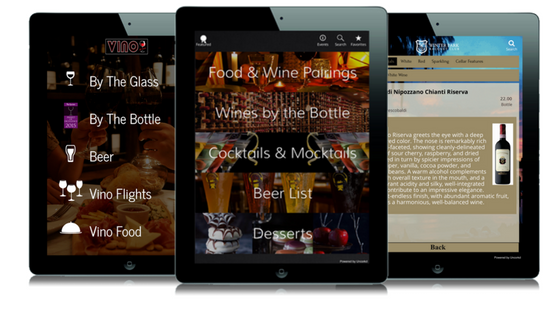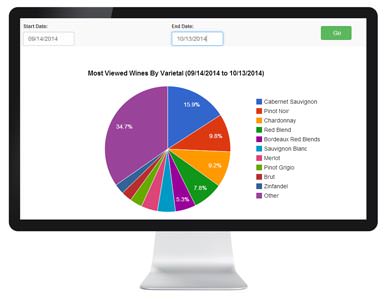What The Hell Does Innovation Mean For Restaurants?
The word innovation gets tossed around a lot, and it’s become a buzzword for any number of industries and services. The restaurant industry is one that likes to slap “innovative” on everything new or different. Innovation is something restaurateurs aspire to. What restaurant critics seek out. And the place eager foodies get to first, and like bell cows, lead the rest of the herd there. But what the hell does innovation mean for restaurants? It’s hard to say, exactly. But there are a lot of things called innovative that are not. And there are proven examples of innovation is. Maybe the better question is, which restaurant innovation really has value for the most restaurants?
Why Is Innovation Important?
Why are restaurateurs constantly seeking out ways to be innovative? The answers are pretty self-evident: the need for a business to stay relevant, to attract new customers, to have a point-of-difference from competitors. Keeping a restaurant open is tough work. Nearly 60% of restaurants fail within the first 3 years of opening. So restaurant operators know that an innovative idea can be the difference between failure and success.
But often, in the hunt for innovation, restaurateurs fall short and mistake gimmicks as innovation. Marketing gurus that flesh out campaigns for big national chains like McDonald’s or Burger King will roll out new products to customers who can’t be bothered with another McDouble, but might be seduced-in-the-moment by a brand new burger with magic sauce, or new type of meat wrapped in a shell made from a different meat. It’s why McDonald’s is currently pushing two new Big Macs and desperate Burger King execs thought hot dogs from BK was something that people wanted.
Marketing gimmicks can attract people with short attention-spans, and it’s a strategy that global chains can afford to employ. A a fancy new idea might draw people into your restaurant or bar at first, but what happens after the buzz wears off and others have copied your idea? Innovation in business has a more meaningful impact than sparking short lived buzz.
Key Point: It’s important for restaurateurs to know that a gimmick won’t save your business. Innovation needs to run deeper than trends and fads. It must change how you operate your business and increase your restaurant’s probability for success.
What IS NOT Innovation

There are a lot of gimmicks that fall into this category. A post on Business Insider listed the greatest restaurant innovations in 2015. But the list isn’t really anything innovated. It’s mostly just a collection of quirks that might spark some low-level curiosity in potential customers. Some examples: Serving spaghetti in a paper cone isn’t innovative, it’s just something that sounds quirky but practical enough to try. Or another example from the list, cheese grater lights. Swapping out paper or cloth light shades for cheese graters, or any other repurposed material, isn’t an innovation that will truly impact your business. If your restaurant finances are flailing a cheese grater light fixture isn’t going to save your business.
Techno-Craze
On the other end of the innovation spectrum is shiny new technology that moon-eyed writers and tech wizards fawn over at gatherings like the National Restaurant Innovation Summit. Things like hologram hostesses seating tables, or live-streaming videos that take people on virtual tours of a restaurant’s kitchen are all things that have received attention and coverage at recent innovation summits. These technologies have a futuristic appeal, and some may become commonplace in restaurants eventually, but your average independent restaurant operator hoping to make next months rent won’t improve their situation with these advances.
Key Point: Restaurant operators looking for new, better ways to do business need services that have accountability and a direct, positive impact between an investment and how it affects sales growth and operational costs.
What IS Innovation?
We’ve taken the long way around to what innovation is for restaurants, so now lets take a look at things that aren’t just gimmicks or cool features. What innovative strategies are available that you can benefit from today?
A note: Innovation requires a willingness to break apart from the way you’ve always done it. That’s a baseline requirement for innovation, the disruption of the status quo. Before you roll your eyes at the word “disruption” (and eye-rolling is the right response here) remember that full-service restaurants have been glacially slow to adopt new practices and innovation, so disruption here is overdue. The reasons for slow adoption are valid. Many restaurants run on slim margins, so it’s necessary that any investment yields a worthy return. Here are some positive examples of restaurant innovation that you can look into today.
Digital Menus

The great thing about digital menus is that they’re available now and have proven success. They have a positive sales impact and also help you manage your restaurant and cut labor costs.
For example, at Uncorkd, our menus give you more control over your beverage program. Think about the problems that come along with running a high end wine program, or even any beverage program:
- Menu Management: The pains of reprinting wine lists, using out-of-date menus, or not being able to adjust and edit your menu when necessary can all slow down service and hurt sales. Digital menus allow more control over your menu, and makes making changes and updates quick and immediate.
- Growing Sales: They allow guests an easier way to find wines they want and search through large lists. With tasting notes provided for each wine or beverage, guests learn more about your selections and gain confidence when ordering. This confidence causes customers to feel more comfortable purchasing wines for a higher price point and will create more beverage sales.
- Staff Training: With the well-known high turnover rates in restaurants, maintaining a knowledgable staff can take a miracle to pull off. With digital menus, you can use the tasting notes available to help train staff and keep your staff knowledgable on all wines. You don’t need to print tech sheets, or set-up time consuming tastings, these tasting notes can be reviewed during any pre-shift meeting, or down-time during service.
Restaurant Analytics

The usefulness of data is becoming harder to ignore for restaurant operators. Data has long be use by corporate chains with the manpower and deep pockets to hire data analysts, but access to customer, sales, and product data is becoming more accessible to independent restaurants.
It’s important to know who your customers are and how they behave. Services like UpServe allow restaurants to pull information on customers and staff from their POS system. The information on customer trends will give you better insights on ways to improve your restaurant operations or marketing.
Uncorkd offers menu analytics that track customer interest trends on your menu. It’s great to be able to look at the numbers and make better decisions on how you structure or design your menu, or what types of beers sell best during which season. Is it important for you to know how your wine selection should be distributed between red wines or white, or Merlot vs. Chardonnay? Menu Analytics can help you make these decisions and feel more confident that they will work.
Smaller Concepts
Many successful restaurateurs are turning towards casual, counter-service concepts to sell their food. The logic behind hyper-focused restaurants is that they are more cost effective to run. You don’t need a staff of servers, with a support line of bussers. You don’t need large kitchen or a big seating area. And you can specialize in one area, and focus on doing that really well. Customers are turning more and more to towards fast-casual options on a daily basis. The food quality has improved, and the price tag is, at least for now, acceptable to customers. If you’re looking into opening a new restaurant, consider the fast-casual option.
Final Thoughts
For restaurant operators looking for ways to stay successful, it’s often about finding better ways to do traditional work. It’s not something unheard of, but for now, restaurants should take steps that allow them to have better control over their business. So much of the information available on restaurant innovation is focused on how to attract customers and alter the customer experience. But those innovations need to be balanced by how restaurants can better run their business. It’s not always about the coolest or latest craze, it’s about becoming better at the detailed, unsexy side of the restaurant industry.
- 5 Fall Cocktails to Capture the Flavors of Autumn - September 26, 2018
- How Restaurants Can Ignore Sales and Increase Profits - May 9, 2018
- 2018 Spring Wine Trends - April 18, 2018









